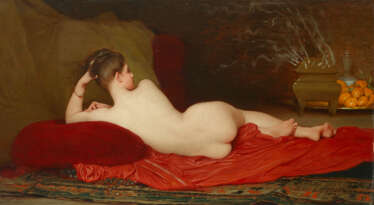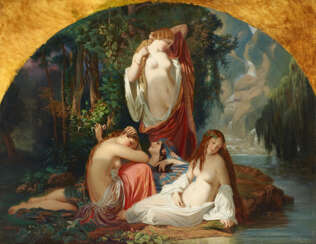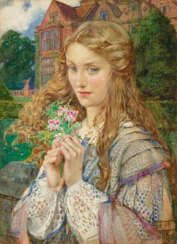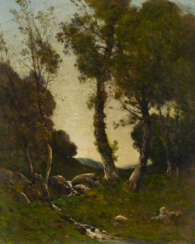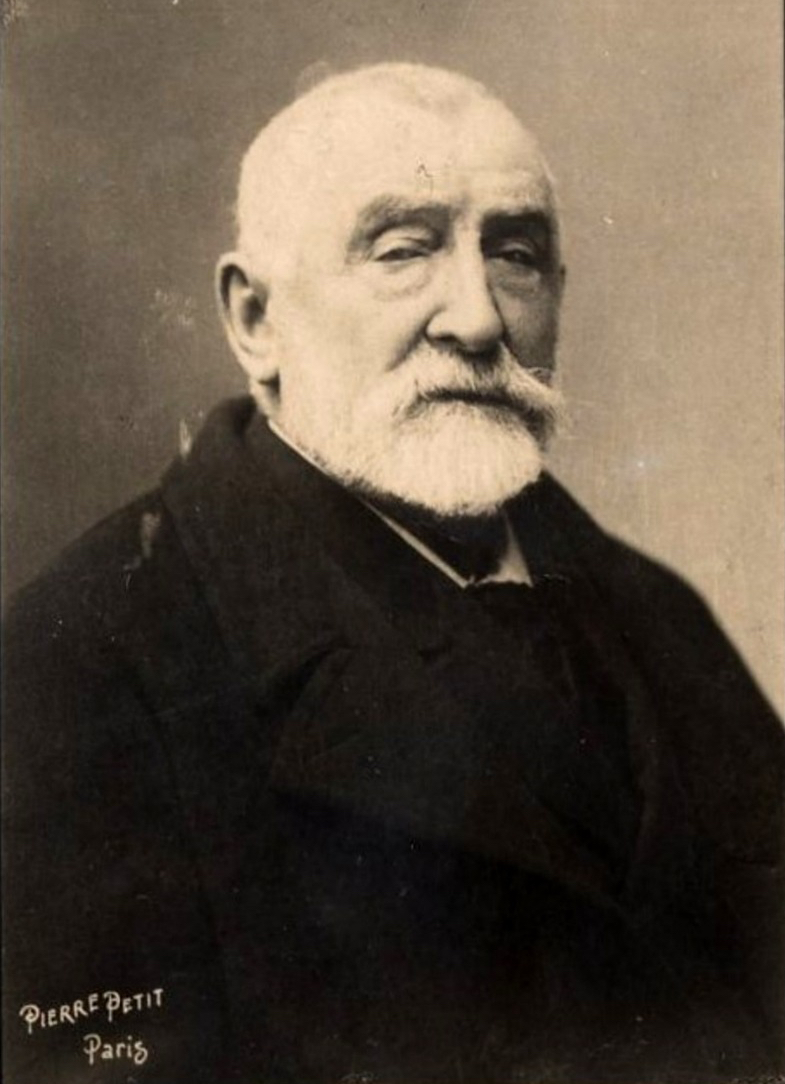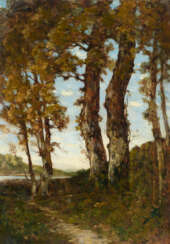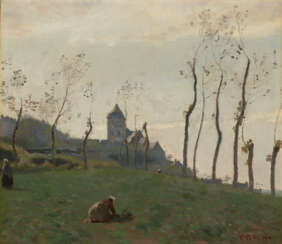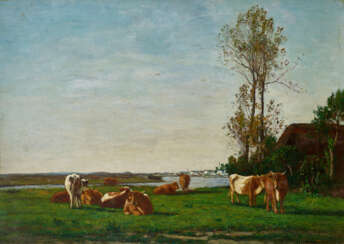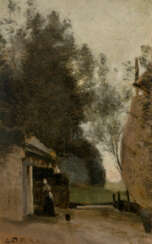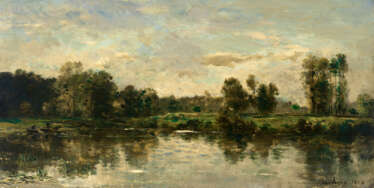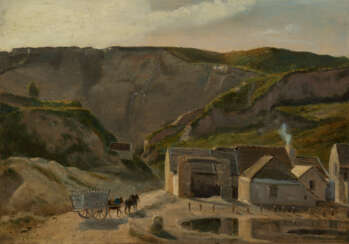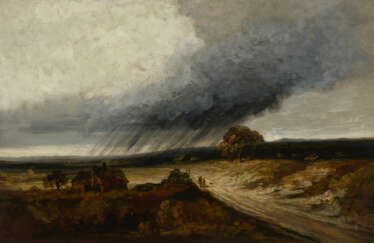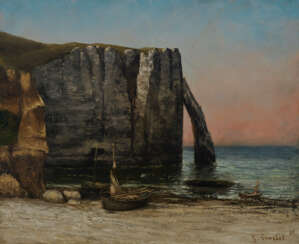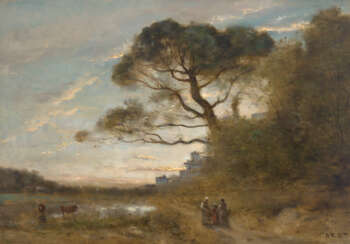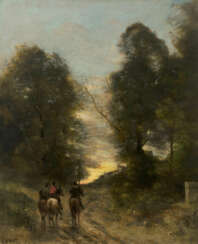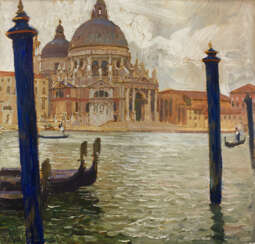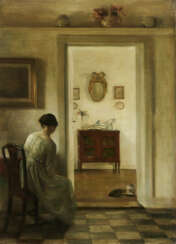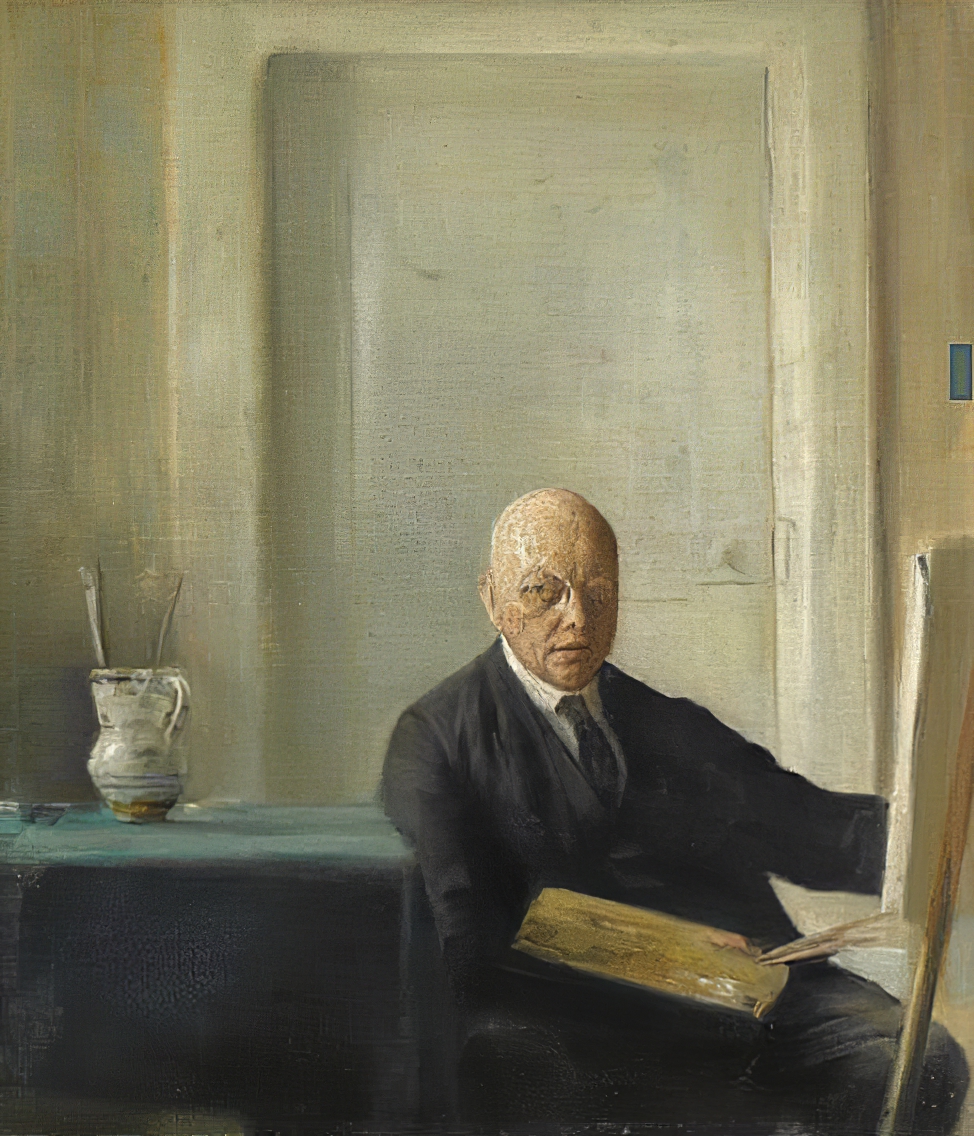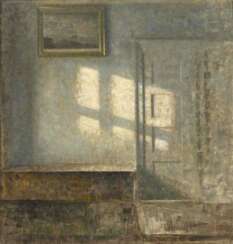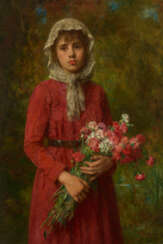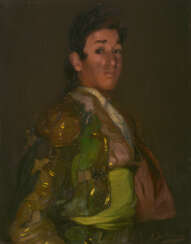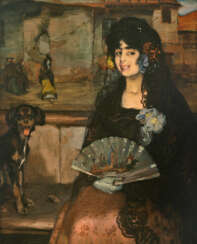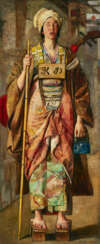
Paintings — European Art
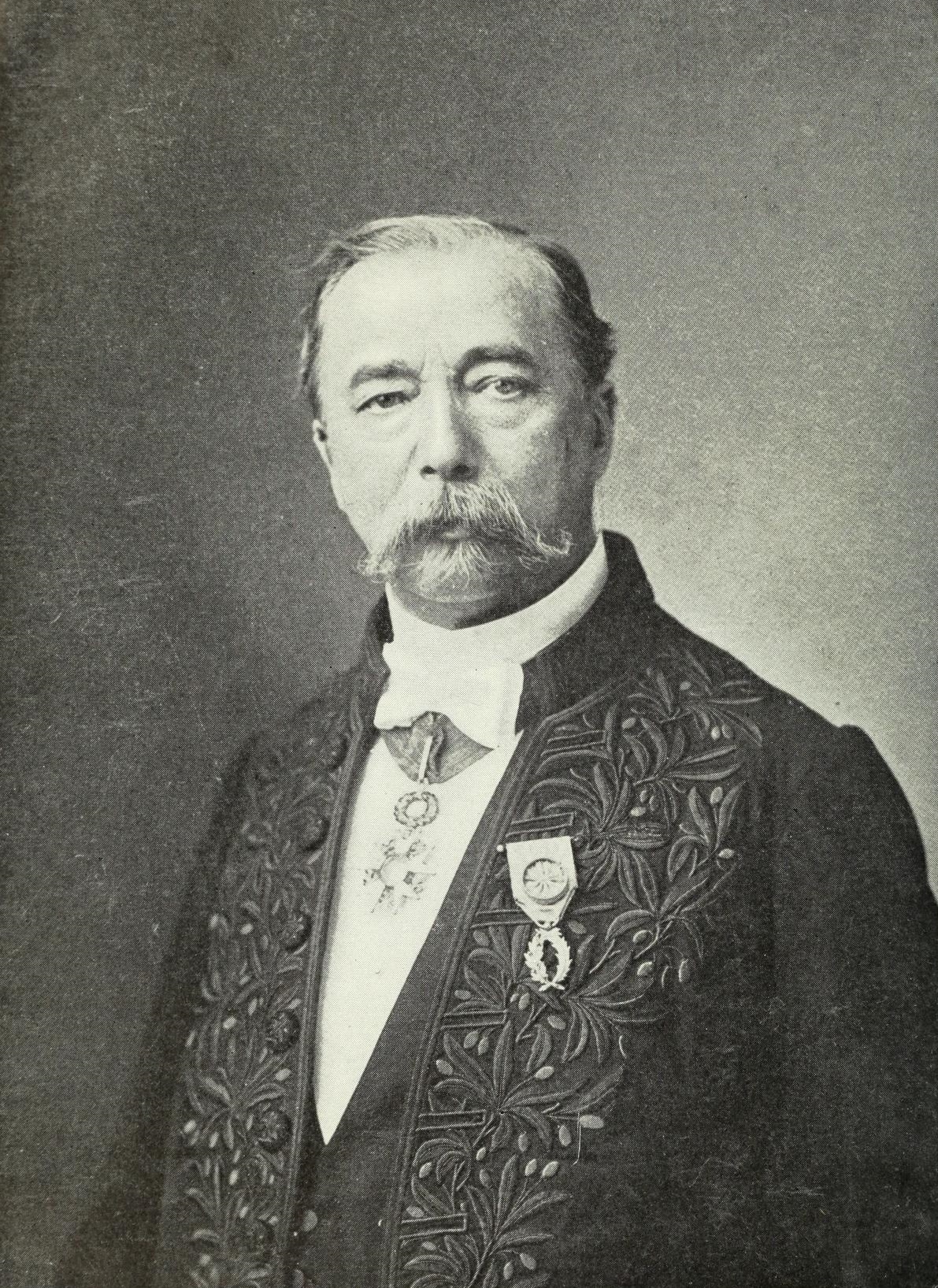
Jules Joseph Lefebvre was a French figure painter, educator and theorist.
He was professor at the Académie Julian in Paris. Lefebvre is chiefly important as an excellent and sympathetic teacher who numbered many Americans among his 1500 or more pupils.
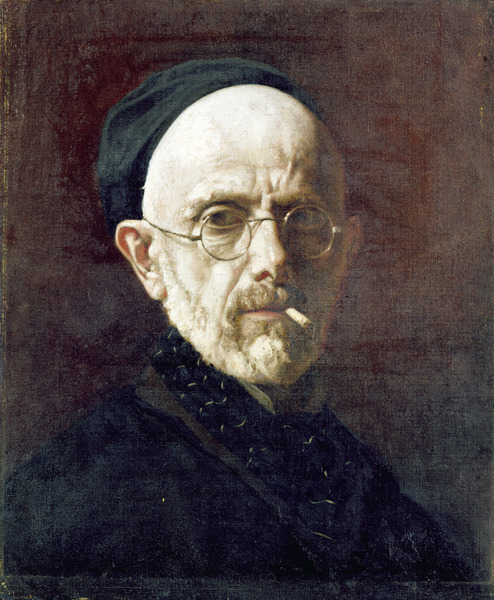
Henri Lehmann, full name Karl-Ernest-Rodolphe-Heinrich-Salem Lehmann, was a French classicist painter.
Henri Lehmann was first trained by his artist father, and then in the studio of Jean-Auguste-Dominique Ingres he received the basis for his work and became his follower. Beginning in 1835, Lehmann exhibited regularly at the Salon, winning medals in 1840, 1848, and 1855.
Known for his fine portraits, he portrayed many figures of his era, writers and composers. He also received numerous commissions for large-scale compositions, including the decoration of the Paris City Hall in 1852, which was destroyed in 1871. In 1861 Lehmann became head of the Académie des Beaux-Arts; from 1875 he was its master.
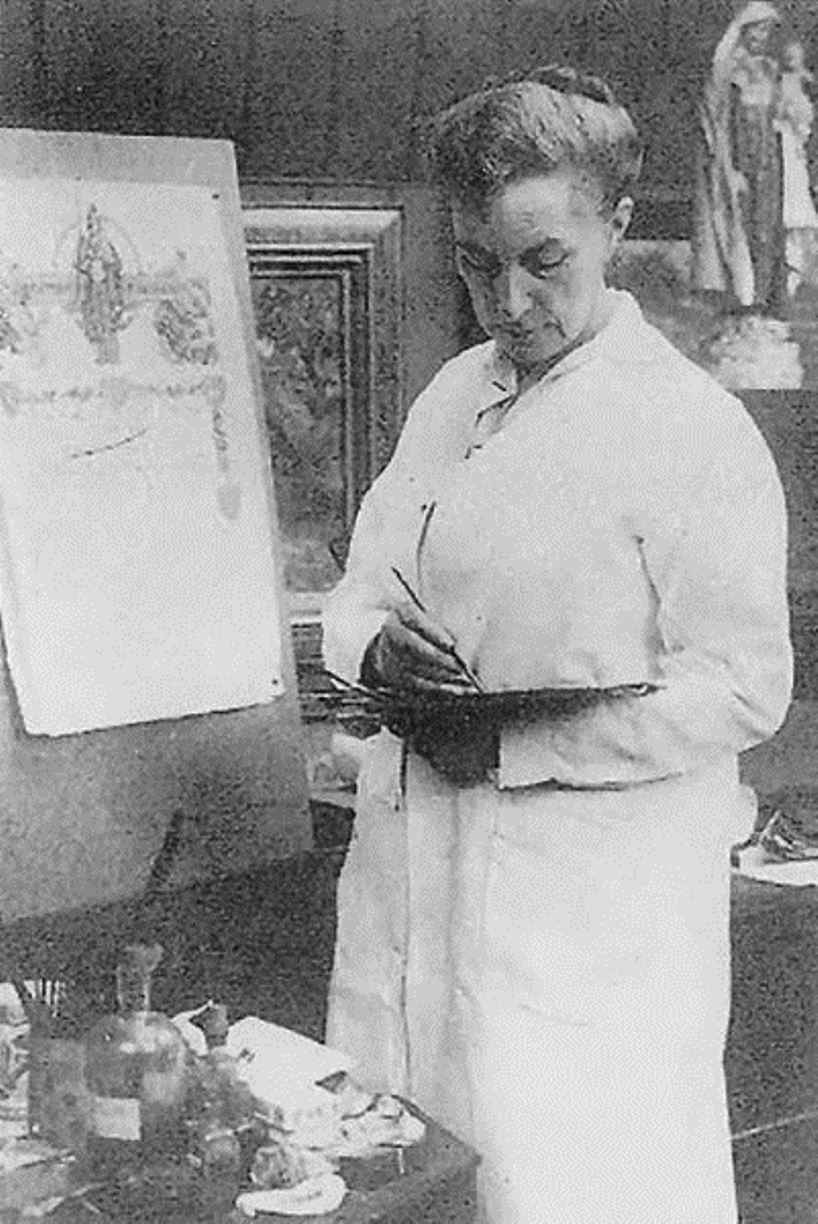
Eleanor Fortescue-Brickdale was a British Pre-Raphaelite painter, illustrator and stained glass artist.
At the age of 17, she enrolled at Crystal Palace School of Art and was later admitted to the Royal Academy of London and she initially worked with illustration. In 1897, Eleanor won a prize for her painting "Spring", which allowed her to begin work on her first large-scale oil painting, "The Pale Color of True Love". The painting was exhibited at the Royal Academy in 1899.
In 1902 Eleanor Fortescue-Brickdale was elected the first female member of the Institute of Oil Painters. She illustrated many books, including Tennyson's Royal Idylls in 1911. She taught at the Byam Shaw School of Art in Kensington. During the First World War, the artist designed posters for government departments and later several commemorative stained glass windows and a memorial in York Cathedral. In 1919 she became a member of the Royal Society of Watercolor Painters.
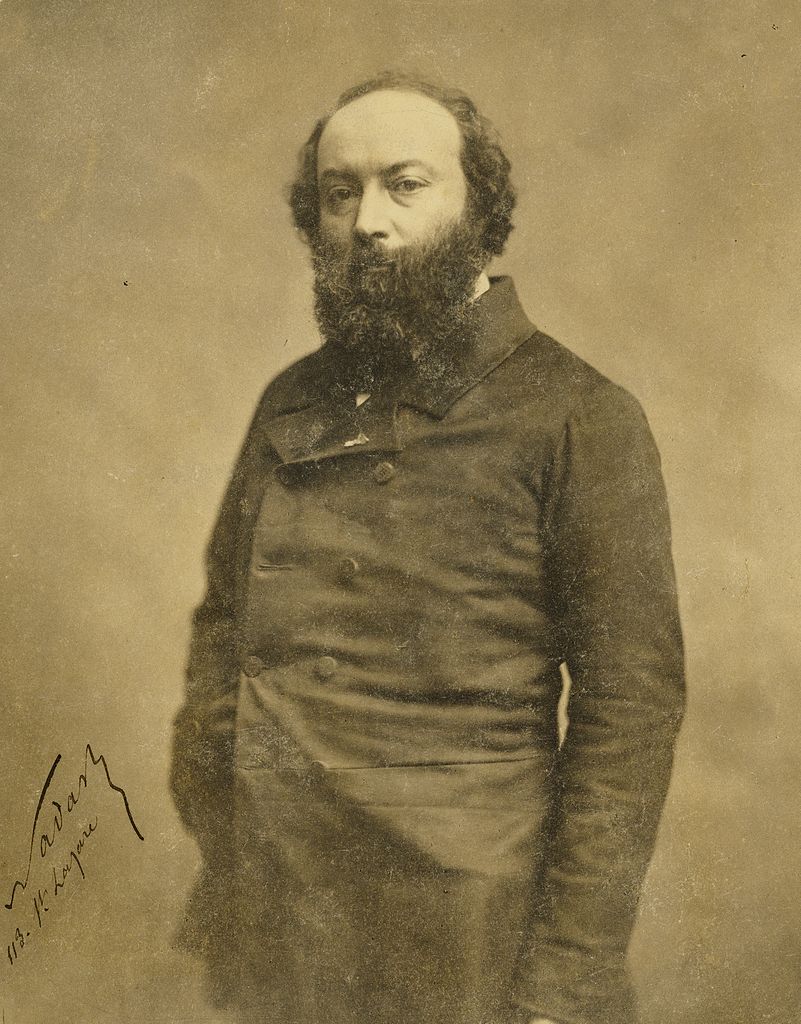
Théodore Rousseau was a prominent French painter, celebrated for his pioneering contributions to the Barbizon school of landscape art. His dedication to capturing nature's essence made him a pivotal figure in landscape painting's evolution. Rousseau's technique involved painting directly from nature, a method that infused his works with a profound sense of realism and vitality. This approach was notably evident in his masterpiece "An Avenue of Trees, Forest of l'Isle-Adam," where he meticulously captured a scene entirely outdoors, a testament to his commitment to authenticity and detail.
Théodore Rousseau's artistry wasn't confined to painting alone; his drawings, like the detailed "Study of an Oak Tree," demonstrate his versatility and deep connection with nature. His works received significant recognition, culminating in a triumphant display at the Universal Exposition of 1855. However, his life was not devoid of challenges. Personal tragedies and professional setbacks marked his later years, yet his resolve and dedication to art remained unshaken.
For art enthusiasts and collectors, Théodore Rousseau's works are pivotal, not just for their beauty but also for their role in the history of landscape painting. His pieces like "The Great Oaks of Old Bas-Bréau" are cherished in collections worldwide, serving as enduring symbols of his talent and his profound influence on subsequent art movements.
For those interested in the intersection of nature and art, subscribing to updates on Théodore Rousseau can provide invaluable insights into his life's work, his contributions to the Barbizon school, and his lasting impact on the world of art. Stay informed about new discoveries, sales, and auction events related to Rousseau's oeuvre to deepen your appreciation and understanding of this illustrious artist's legacy.
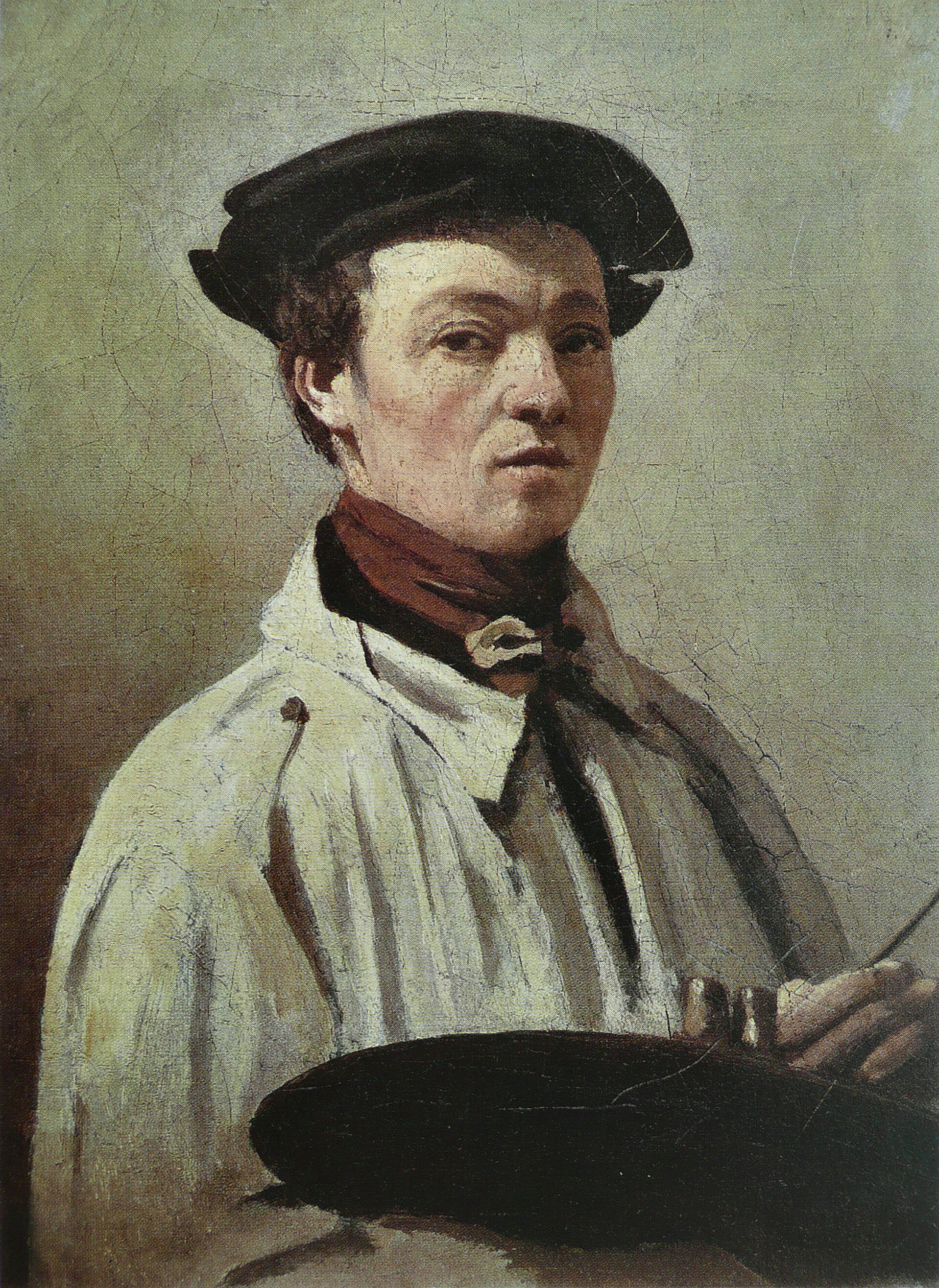
Jean-Baptiste-Camille Corot was a French landscape and portrait painter as well as a printmaker in etching. He is a pivotal figure in landscape painting and his vast output simultaneously referenced the Neo-Classical tradition and anticipated the plein-air innovations of Impressionism.

Eugène Louis Boudin was one of the first French landscape painters to paint outdoors. Boudin was a marine painter, and expert in the rendering of all that goes upon the sea and along its shores. His pastels, summary and economic, garnered the splendid eulogy of Baudelaire; and Corot called him the «King of the skies».
.jpg)
Jean-François Millet was a French artist and one of the founders of the Barbizon school in rural France. Millet is noted for his paintings of peasant farmers and can be categorized as part of the Realism art movement. Toward the end of his career, he became increasingly interested in painting pure landscapes. He is known best for his oil paintings but is also noted for his pastels, conte crayon drawings, and etchings.

Jean-Baptiste-Camille Corot was a French landscape and portrait painter as well as a printmaker in etching. He is a pivotal figure in landscape painting and his vast output simultaneously referenced the Neo-Classical tradition and anticipated the plein-air innovations of Impressionism.
 Шарль-Франсуа Добиньи. Фотография художника.jpg)
Charles-François Daubigny was a French painter, one of the members of the Barbizon school, and is considered an important precursor of impressionism.
He was also a prolific printmaker, mostly in etching but also as one of the main artists to use the cliché verre technique.

Jean-Baptiste-Camille Corot was a French landscape and portrait painter as well as a printmaker in etching. He is a pivotal figure in landscape painting and his vast output simultaneously referenced the Neo-Classical tradition and anticipated the plein-air innovations of Impressionism.
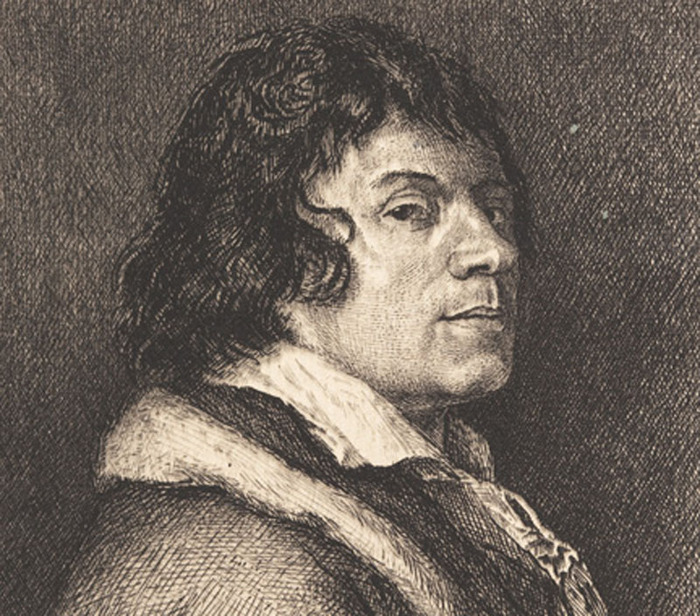
Georges Michel was a French landscape painter and restorer.
Georges Michel painted landscapes in oil and watercolor, creating many paintings of views of Paris neighborhoods. In 1791, the artist made his debut at the Salon, where he continued to exhibit regularly. However, critics ignored Michel, considering his works too similar to those of the Dutch masters. From 1800 he worked at the Louvre as a restorer of Flemish and Dutch paintings, including works by Rembrandt, Jacob van Ruysdal and Meindert Hobbema, who had a decisive influence on his own work.
A forerunner of the Barbizon School, Georges Michel was forgotten for several decades after his death. The first major exhibition of his work was presented in Paris in 1927. Today, his work is in museums around the world, including the Metropolitan Museum of Art, the Hermitage Museum, the Vanderbilt University Gallery, the Strasbourg Museum of Fine Arts, the Victoria and Albert Museum, and many others.
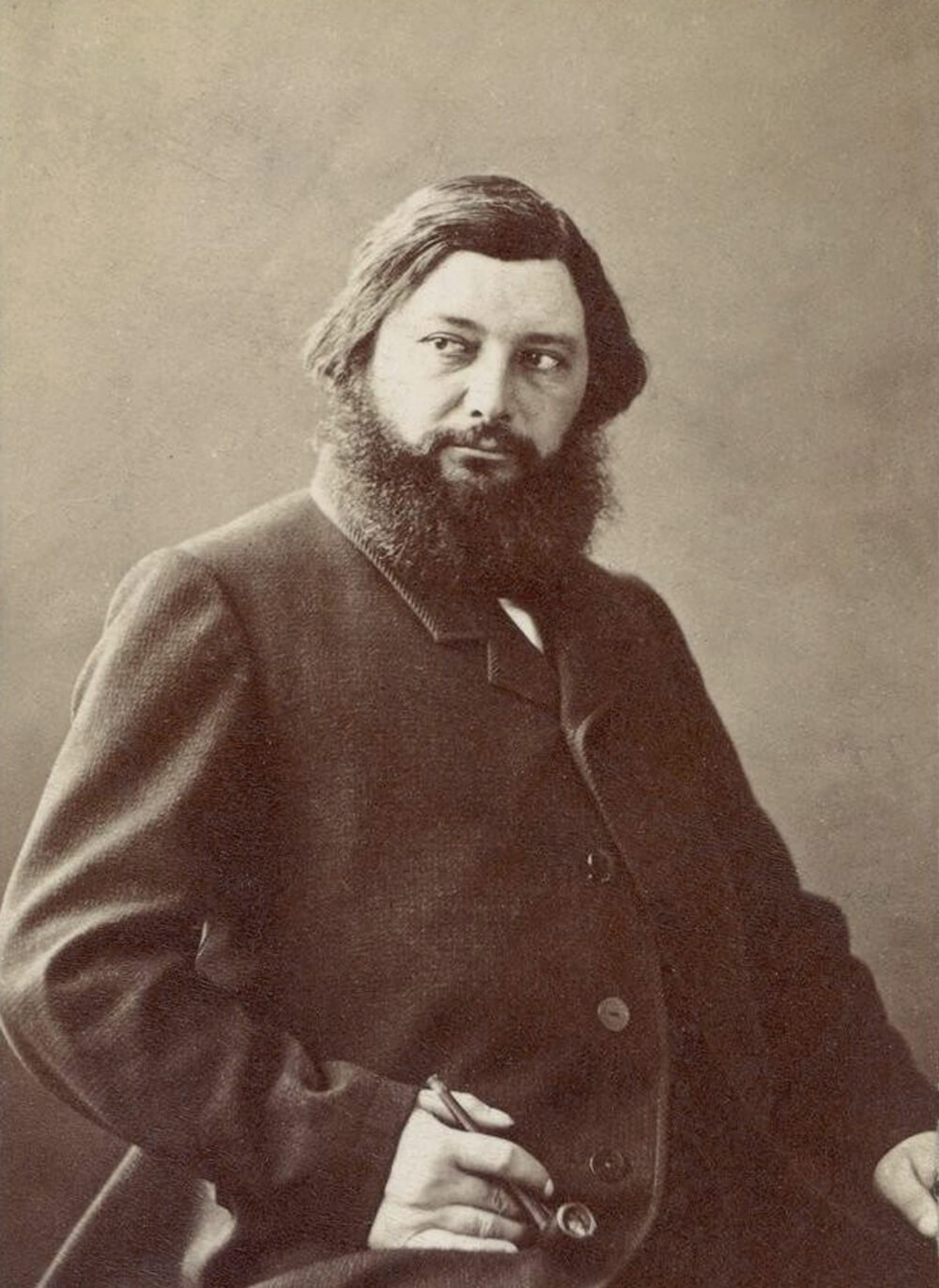
Jean Désiré Gustave Courbet was a French painter who led the Realism movement in 19th-century French painting. Committed to painting only what he could see, he rejected academic convention and the Romanticism of the previous generation of visual artists. His independence set an example that was important to later artists, such as the Impressionists and the Cubists. Courbet occupies an important place in 19th-century French painting as an innovator and as an artist willing to make bold social statements through his work.

Jean-Baptiste-Camille Corot was a French landscape and portrait painter as well as a printmaker in etching. He is a pivotal figure in landscape painting and his vast output simultaneously referenced the Neo-Classical tradition and anticipated the plein-air innovations of Impressionism.

Jean-Baptiste-Camille Corot was a French landscape and portrait painter as well as a printmaker in etching. He is a pivotal figure in landscape painting and his vast output simultaneously referenced the Neo-Classical tradition and anticipated the plein-air innovations of Impressionism.
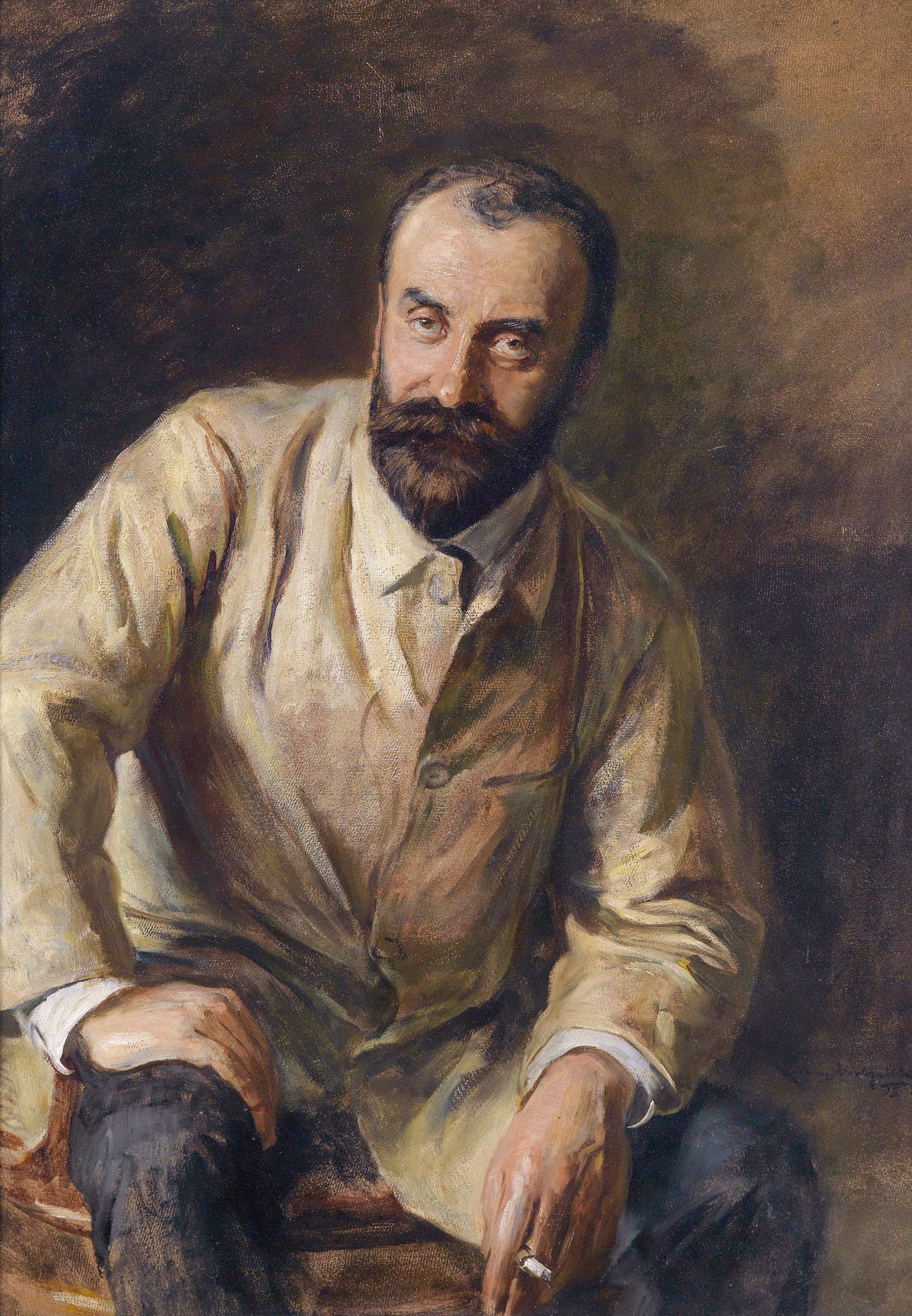
Carl Moll, full name Carl Julius Rudolf Moll, was an Austrian painter of the Art Nouveau era.
Moll studied at the Vienna Academy of Fine Arts, in 1897 he was active in the creation of the Vienna Secession, and in 1903, thanks to Carl Moll, the Modern Gallery, now called the Austrian Gallery Belvedere, was established. He also worked hard to promote the work of Gustav Klimt and Vincent van Gogh in Germany.
In the early thirties Carl Moll joined the National Socialists and became a staunch supporter. In 1945, when the Soviet troops were approaching Vienna, Carl committed suicide.
In the history of art he remained as the author of bright landscapes and still lifes. Carl Moll is still one of Austria's most prominent artists.
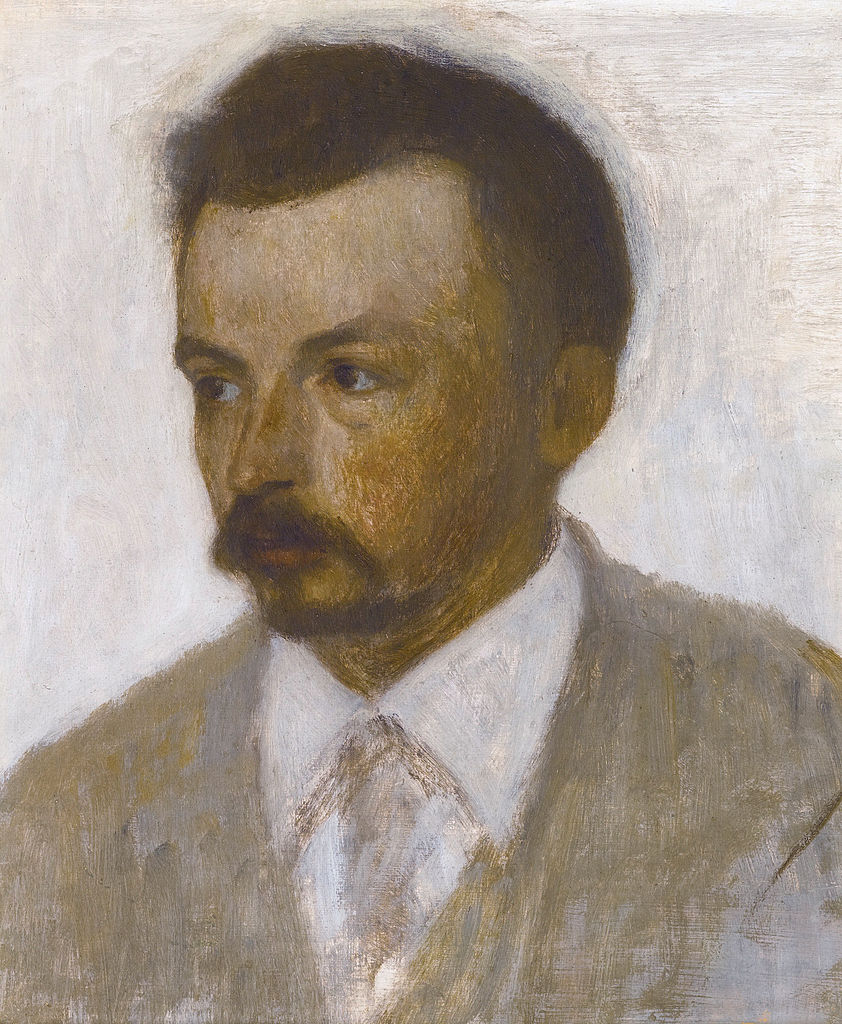
Vilhelm Hammershøi was a Danish painter of predominantly interiors, a representative of the Symbolist movement.
Vilhelm studied at the Royal Danish Academy of Fine Arts in Copenhagen, and a few years later at the 1889 World Exhibition in Paris, four of his paintings were exhibited in the Danish pavilion. Hammershøi was the last significant painter in nineteenth-century Danish art. He painted against a background of contemporary experience, but his painting never deviated from the basic rules of Danish Golden Age paintings.
At first his motifs alternated between figure and landscape painting, and later Hammershøi became truly an interior painter. Rooms became a constant source of subjects for him, and the walls and windows that form the boundary to the world almost literally became the backdrop for his paintings. People in his paintings, if present, then as silent statues, completely immersed in their thoughts. All his works, whether portraits, interiors or landscapes, are full of silence, peace and melancholy.
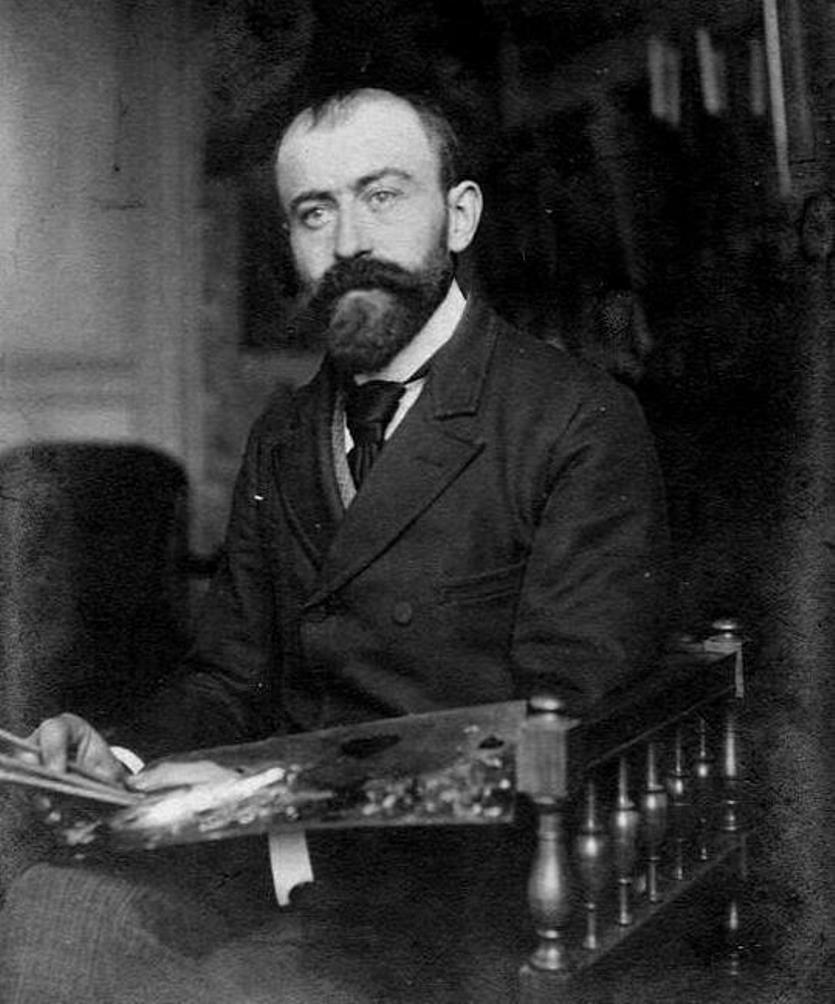
Aleksei Alekseevich Kharlamov (russian: Алексей Алексеевич Харламов) was a Russian artist renowned for his portrait paintings. Born in 1840 in Saratov, Russia, Kharlamov displayed artistic talent from an early age, eventually studying under the guidance of Professor A. T. Markov at the Imperial Academy of Arts. His dedication to art was rewarded with several medals during his academic years, and his piece titled "Baptism of Kiev" earned him a prestigious gold medal in 1866.
Kharlamov spent much of his career in Paris, where he was deeply influenced by Western European artistic movements. His works often featured delicate and finely detailed representations of women and children, capturing the subtleties of expression and mood which became his signature style. Notably, his painting "Young Woman and Child" from 1894 showcases his adept use of light and texture to portray serene domestic scenes, a piece that is currently held in the Bowdoin College Museum of Art.
Throughout his career, Kharlamov was associated with prominent cultural figures such as the novelist Ivan Turgenev, and he participated actively in the Parisian art scene. His portraits were highly sought after, with clients paying substantial sums for his works, reflecting his status as a distinguished portraitist of his time.
For those interested in exploring the works of Aleksei Alekseevich Kharlamov and the rich cultural tapestry of his era, signing up for updates on auctions and events featuring his art can provide valuable insights and opportunities to acquire pieces by this notable artist. Stay informed about the latest sales and exhibitions by subscribing to our newsletter dedicated to Kharlamov’s legacy.
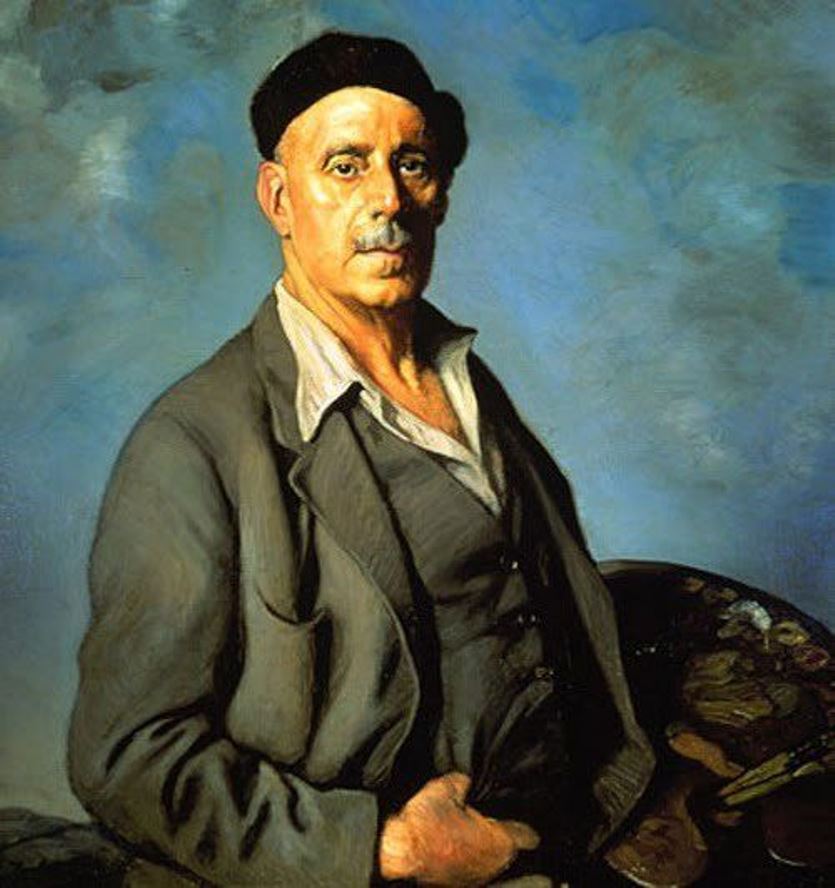
Ignacio Zuloaga Zabaleta was a Spanish painter.
At the age of 18, Ignacio came to Paris, first attending the Free Academy and then the Academy of La Palette, becoming acquainted with the leading Impressionist painters. Over time, Zuloaga developed a style based on the realist Spanish tradition and in the characteristic gloomy style inherited from Ribera and Goya, wrote bullfighters and flamenco dancers. He was generally a great admirer of bullfighting and often depicted it, as well as Spanish landscapes, domestic scenes and portraits.
In 1893, Zuloaga, along with other young Basque society members, founded the Curding Club, also known as The Desk, in Bilbao. In April 1895, the Paris gallery Le Barc de Bouteville exhibited six of his works painted in Andalusia, where the artist enjoyed living and working very much. His painting changed, and Ignacio Zuloaga's paintings reflecting a cheerful, folkloric Spain attracted critical acclaim.
During his career, Zuloaga received various awards and honors both nationally and internationally. Critics in Paris called him "the last great master of the Spanish school of painting".
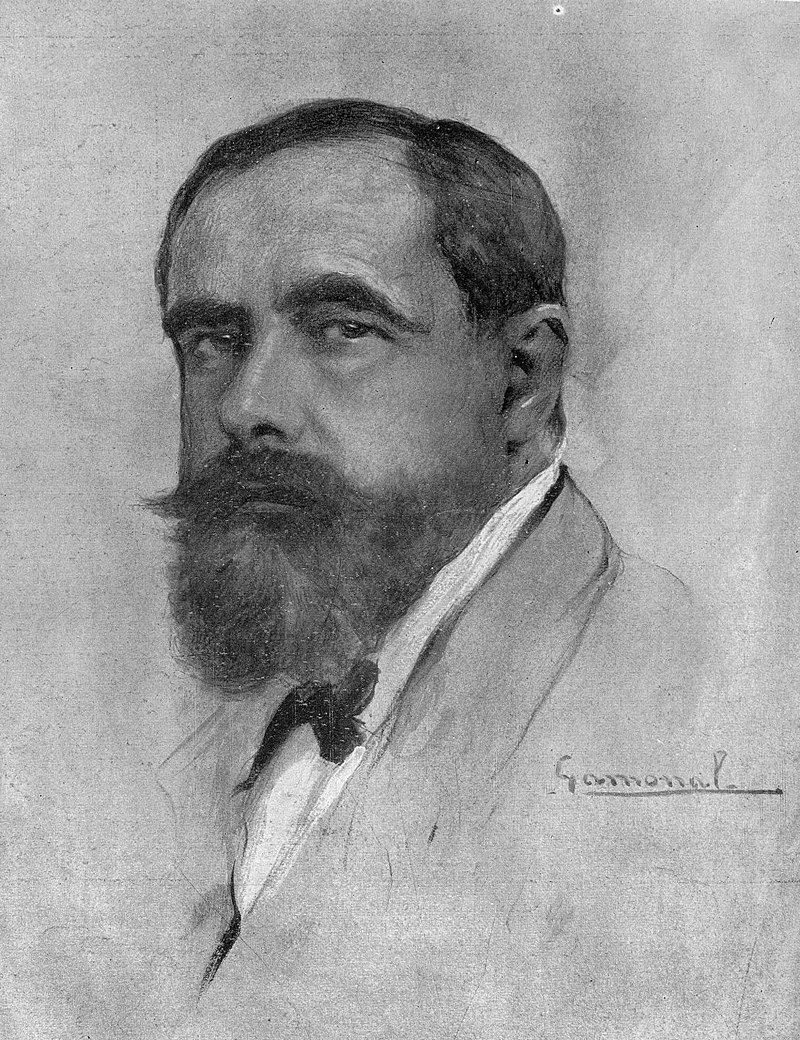
Hermenegildo Anglada Camarasa was a Spanish painter.
Camarasa studied at the Llotja de Barcelona School of Fine Arts under Modeste Urgel, whose work influenced his first landscapes. He moved to Paris in 1894, studying at the Académie Julian and the Académie Colarossi. His colorful style of painting shows a strong Oriental and Arabic influence, and his decorative style is associated with the work of Gustav Klimt.
In the early 1990s, Camarasa opened a painting school attended by many students, including Marie Blanchard. He was one of the founders of the Autumn Salons of Paris and was associated with the artists of the Vienna Secession. Camarasa's works from these years, depicting nighttime street scenes, Parisian cabarets and music halls, attracted the attention of Pablo Picasso, who had recently arrived in Montmartre; he even painted a profile portrait of Anglade.
In 1901 Camarasa took part in an international exhibition in Dresden, where he was a great success. He subsequently exhibited all over the world and was awarded gold medals in Venice (1907) and Buenos Aires (1910). During the war years 1939-1947 the artist lived in exile in France.

Ignacio Zuloaga Zabaleta was a Spanish painter.
At the age of 18, Ignacio came to Paris, first attending the Free Academy and then the Academy of La Palette, becoming acquainted with the leading Impressionist painters. Over time, Zuloaga developed a style based on the realist Spanish tradition and in the characteristic gloomy style inherited from Ribera and Goya, wrote bullfighters and flamenco dancers. He was generally a great admirer of bullfighting and often depicted it, as well as Spanish landscapes, domestic scenes and portraits.
In 1893, Zuloaga, along with other young Basque society members, founded the Curding Club, also known as The Desk, in Bilbao. In April 1895, the Paris gallery Le Barc de Bouteville exhibited six of his works painted in Andalusia, where the artist enjoyed living and working very much. His painting changed, and Ignacio Zuloaga's paintings reflecting a cheerful, folkloric Spain attracted critical acclaim.
During his career, Zuloaga received various awards and honors both nationally and internationally. Critics in Paris called him "the last great master of the Spanish school of painting".
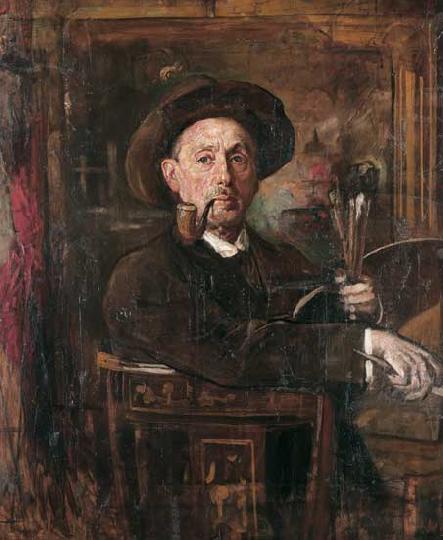
Gyula Tornai, born Groszmann, was a Hungarian orientalist painter.
He received his artistic education at academies in Vienna, Munich and at the Benchur workshops in Budapest, where he studied under Hans Makart and Gyula Benchur. Then Tornai spent 10 years in Morocco and Tangier, traveling also in Spain, Algeria, observing the life of the peoples of these countries. During these years, the artist painted many paintings depicting street life, merchants, musicians and harems. In 1900 he exhibited his paintings at the World Exhibition in Paris with great success.
After 1905, Tornai traveled to India and Japan, where he was able to study customs, Buddhism and Shintoism in detail, which was rare for Europeans. Gyula Tornai had a keen observation and many of his paintings are painted with irony and humor. The Hungarian artist has a well-deserved reputation as a connoisseur of the Orient.
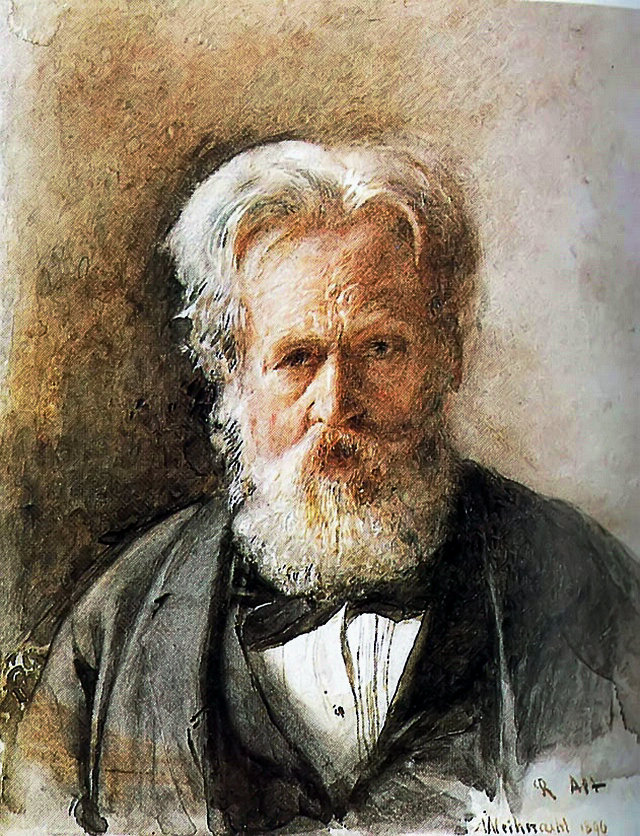
Rudolf von Alt was an Austrian watercolorist and landscape painter.
Rudolf studied at the Academy of Art in Vienna, painted architectural landscapes and portraits. In search of interesting views, he traveled extensively throughout Europe, worked for some time in Rome and Naples, visited the lakes of Lombardy, then Galicia, Bohemia, Bavaria. In 1863 Rudolf von Alt came to the Crimea to paint views of the Empress's estate, and in 1867 he traveled to Sicily.
Critics note his masterful command of watercolor, thanks to which the artist very realistically conveys the details of architecture and shades of light. Von Alta's later works reflect the trends of Impressionism.
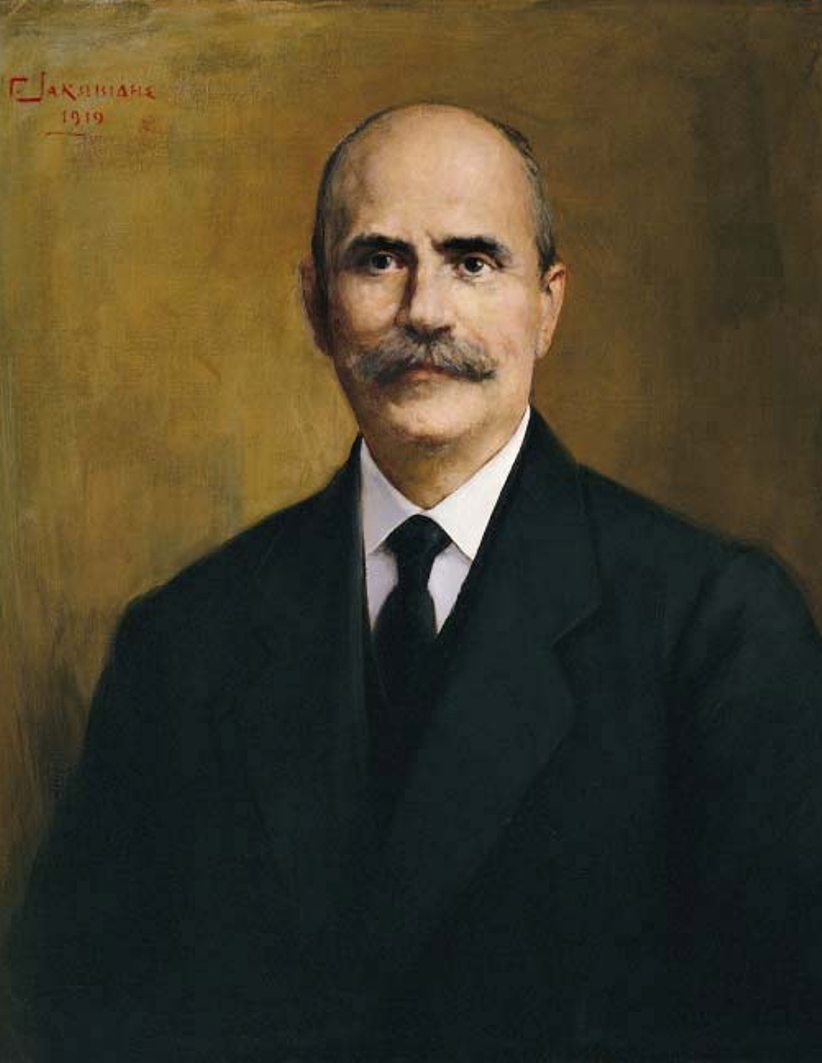
Georgios Jakobides was a Greek painter, representative of the Munich School of Greek painting.
He studied at the Athens School of Art (later the Academy of Fine Arts), then at the Academy of Fine Arts in Munich. Jakobides painted mythological scenes, genre paintings and portraits influenced by German academic realism.
His many characteristic paintings of children established Jakobides' reputation as a children's artist. As a perceptive psychologist and keen observer of human nature, he was a consummate draftsman. His painting The Reading Girl (1882), first exhibited in Munich, was admired by critics and the public.
In 1990 Georgios Jakobides returned to his homeland and became the first director of the National Gallery of Greece. In 1904 he was appointed director of the Athens School of Fine Arts, where he taught for 25 years. In addition to these activities, the artist continued to paint portraits, including of prominent Greeks.
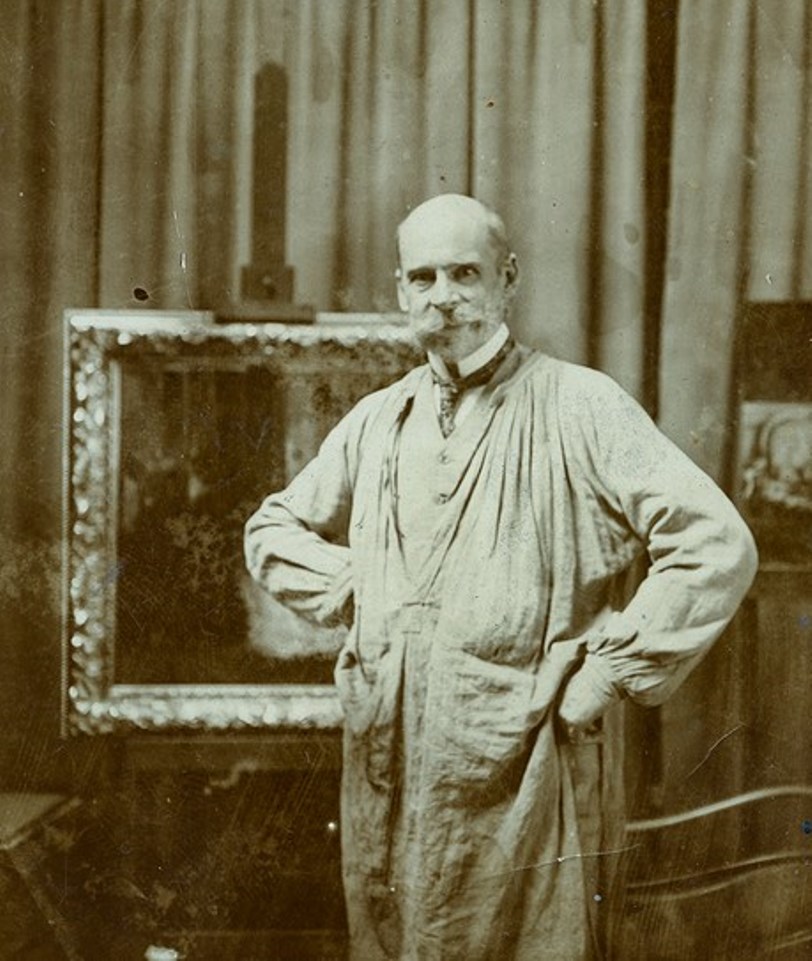
Gaston La Touche was a French painter, illustrator, engraver, and sculptor, a representative of Post-Impressionism.
In his paintings the artist showed his idealistic universe inhabited by nymphs in parks, among fountains, flowers and fireworks.

Jean Béraud was a French painter renowned for his numerous paintings depicting the life of Paris, and the nightlife of Paris society. Pictures of the Champs Elysees, cafés, Montmartre and the banks of the Seine are precisely detailed illustrations of everyday Parisian life during the "Belle Époque". He also painted religious subjects in a contemporary setting.
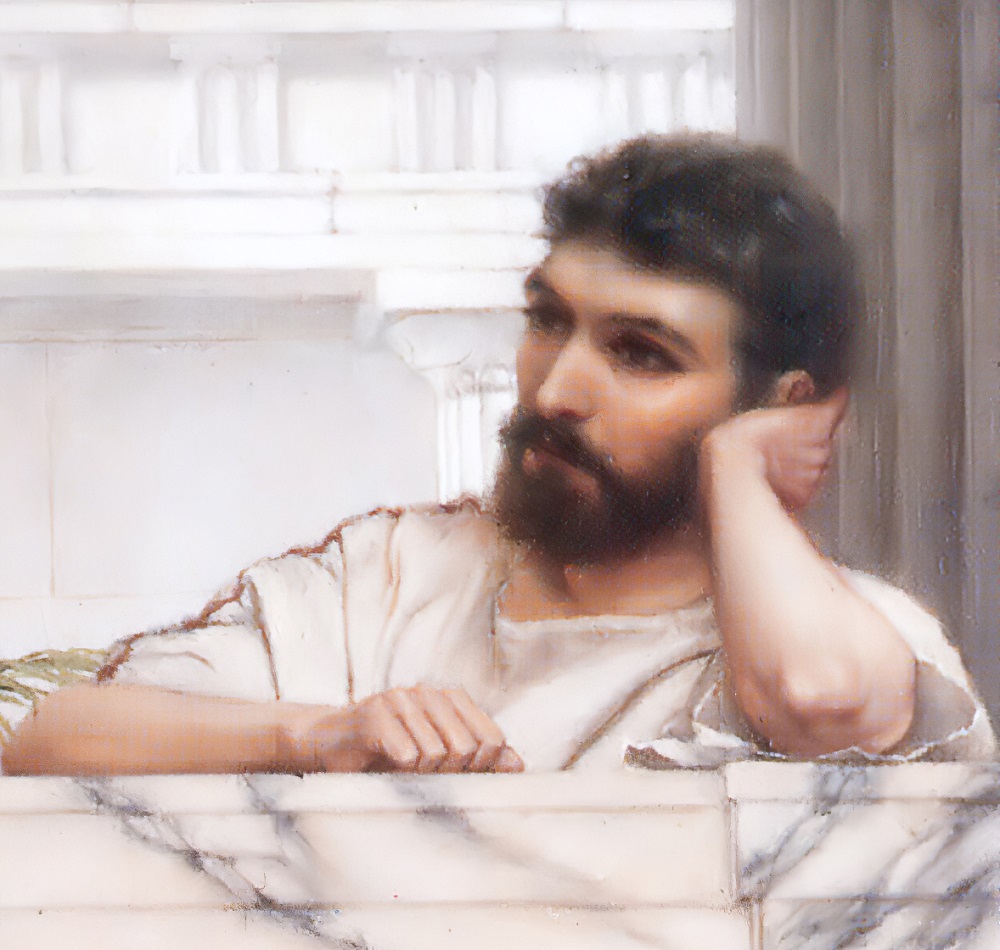
John William Godward was an English painter from the end of the Neo-Classicist era. He was a protégé of Sir Lawrence Alma-Tadema, but his style of painting fell out of favour with the rise of modern art.
